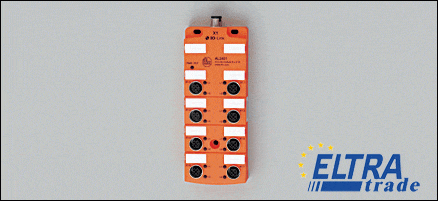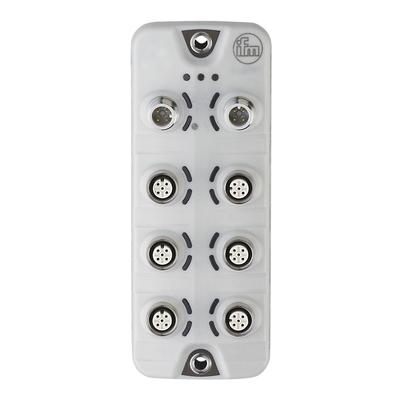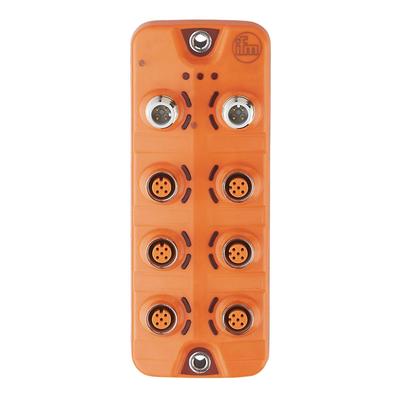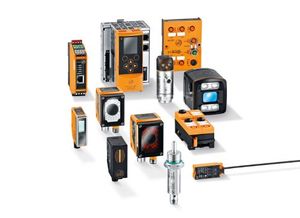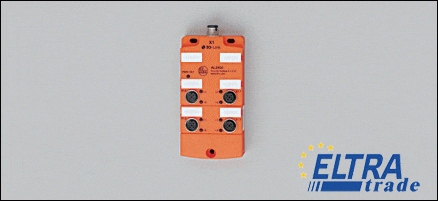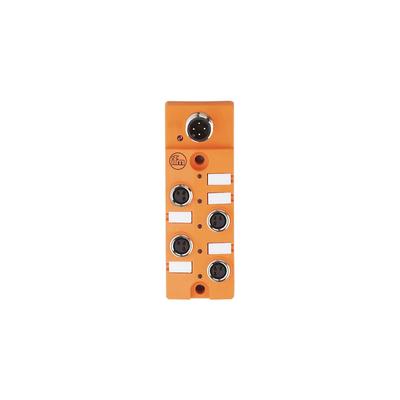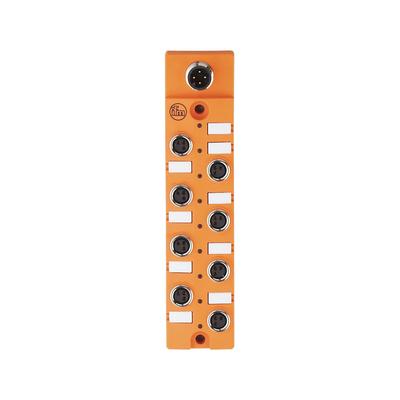IFM I-O Link Module
I/O modules for field applications, 4 IO-Link ports / 4 digital inputs, Profibus DP interface, Sockets M12 x 1
I/O modules for field applications, 8 inputs, Profibus DP interface, Sockets M12 x 1
The development of technologies for connecting sensors and actuators is proceeding rapidly. They no longer transmit data via standard binary and analog interfaces but are becoming increasingly intelligent devices thanks to embedded microprocessors, and they also form the basis for additional smart devices that extend the functionality of the sensors. IFM uses IO-Link, a standard communication protocol supported by sensor and control companies worldwide. The company also produces IO-Link communication modules, which we will discuss in more detail today.
Significance of IO-Link Technology in Industrial Automation
It is not for nothing that the IFM IO-Link communication interface is considered the basis of intelligent manufacturing concepts and the leading technology of Industry 4.0. It is the world's first vendor-neutral, system-agnostic technology that provides users with a wide variety of diagnostic and device data and, using higher-level protocols, access from anywhere in the world. IO-Link establishes a permanent bidirectional connection between the control sensor and actuator layers.
The success of IO-Link is reflected in the ever-increasing membership of the IO-Link Community, which pioneered this industrial communications standard and today has over two hundred members. With over 15 million field network nodes already connected worldwide, point-to-point connectivity is firmly established in the industry and is in high demand.
Stability diagnostics enable on-demand maintenance. If external influences lead to sensor displacement and the object is practically not in the detection range, the position of the sensor must be urgently corrected. The stability diagnostic function helps detect such deviation in the sensor. A faulty sensor provides status data to the stability diagnostic function and process data, indicating reduced reliability and possible failure. This allows you to process a maintenance request and prevent downtime quickly.
The operating hour meter provides preventative maintenance by providing information about the actual working time of the sensor. Using the user interface, you can query the operating hours and set the limits that the sensor should not exceed. Maintenance personnel are notified when a certain number of operating hours is reached and the sensor needs to be replaced.
The temperature indicator prevents the consequences of unexpected temperature changes. If the device's operating temperature rises above or falls below the optimal value, this condition can be determined using the built-in temperature indicator. With its help, they quickly find the location of the malfunction and take the necessary measures, eliminating downtime.
Device status data allows monitoring. Users can view detailed device status information when an error message appears and take appropriate action. This information includes general and event data (depending on the manufacturer).
Parameterization during operation. When one production line produces different products, parameter changes and equipment retooling are often required. This can lead to downtime, some of it costly. IO-Link technology allows you to configure sensors and actuators, simultaneously transferring process and parameter data from the control system to all these devices directly during operation. This ensures continuous production of different batches down to single products.
Compatibility with IFM Sensors and Devices
Many production systems use an IO-Link master module, which can be purchased from IFM. These modules can process both analog and digital signals. This capability gives IO-Link two distinct advantages. Firstly, it can be integrated into existing systems and use industrial Ethernet communication and well-known protocols such as Profibus, Modbus, and ProfNet.
The second advantage is that IO-Link works well with machine connectivity platforms that can autonomously standardize data between machines and devices. Sensors must be explicitly connected to the IFM host, and the ecosystem includes over 26,000 types of sensors that can be linked. This makes it possible to combine machine assets from different generations and different OEMs. The IFM IO-Link module establishes communication between devices and the equipment connection platform quickly and easily.
Recap of the Benefits and Applications of IFM IO-Link Modules
IFM modules offer various benefits and find applications in industrial automation and control systems. Let’s check them below.
IO-Link Module Benefits
- Enhanced communication. IO-Link technology provides a standardized and high-speed communication interface between sensors and controllers, improving data exchange and response times.
- Easy configuration. IFM IO-Link modules simplify the configuration and parameterization of sensors and actuators, reducing setup time and potential errors.
- Remote configuration. Some of these modules support remote configuration, allowing users to adjust sensor settings and parameters from a central location, enhancing flexibility and ease of maintenance.
- Diagnostics and maintenance. IO-Link enables real-time diagnostics and monitoring of connected devices, making it easier to identify and address issues, and reducing downtime and maintenance costs.
- Device identification. This protocol provides unique identification for devices within the network, facilitating IO-Link device management and tracking.
- Data logging and analysis. Each IFM IO-Link module supports data logging and analysis, allowing users to collect historical data for process optimization, quality control, and predictive maintenance.
- Integration. These modules can seamlessly integrate with various industrial control systems, including PLCs and HMIs, streamlining control and monitoring of devices.
- Firmware Updates. Such devices offer firmware update capabilities, ensuring devices remain up-to-date with the latest features and improvements.
IO-Link Module Applications
- Quality control. IFM IO-Link modules are used in quality control applications to monitor and collect data from sensors related to product quality, ensuring consistent production standards.
- Manufacturing automation. In manufacturing, IO-Link modules play a crucial role in automating processes, such as part detection, presence sensing, and measurement.
- Predictive maintenance. Real-time diagnostics and data logging provided by IO-Link modules enable predictive maintenance by identifying potential issues before they lead to equipment failures.
- Material handling. IO-Link is used in material handling systems for tasks such as object detection, sorting, and tracking.
- Packaging and labeling. IO-Link modules are employed in packaging and labeling machines to ensure accurate positioning, verification, and quality checks of packaged products.
- Pharmaceuticals and food processing. In these industries, IO-Link modules are used for monitoring and controlling critical processes, ensuring product safety and compliance with regulations.
- Logistics and warehousing. IO-Link technology is utilized in logistics and warehousing systems for tasks like conveyor control, inventory management, and automated guided vehicles (AGVs).
- Environmental monitoring. IO-Link modules help collect data from environmental sensors for applications like temperature and humidity control in cleanrooms and manufacturing environments.
- Energy management. IO-Link enables energy monitoring and optimization by collecting data from sensors related to power consumption and energy efficiency.
- Robotics. IO-Link modules are integrated into robotic systems for precision sensing, positioning, and control of robotic arms and end-effectors.


